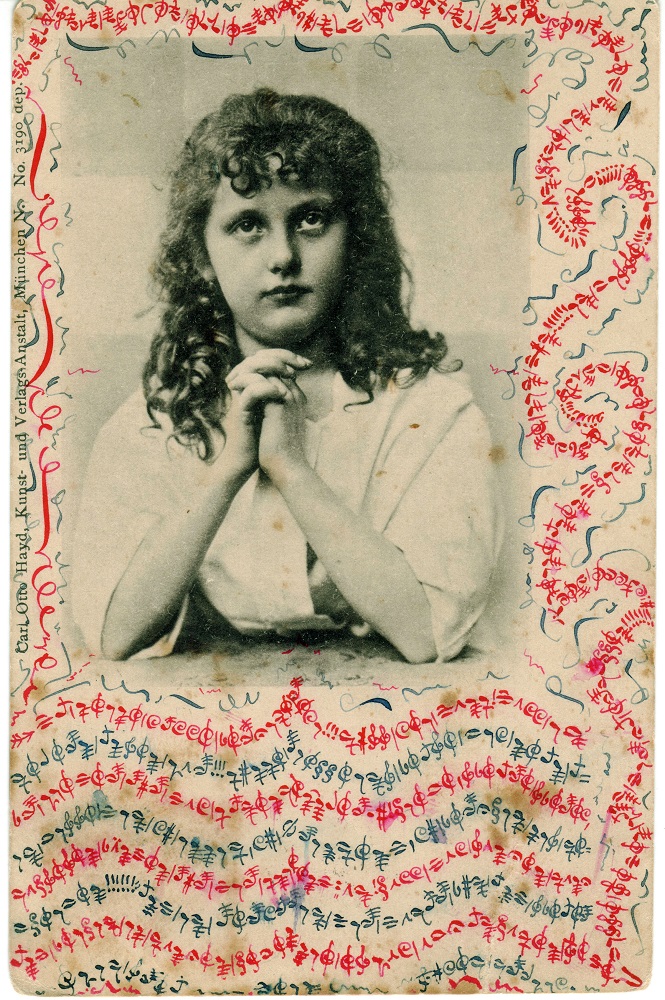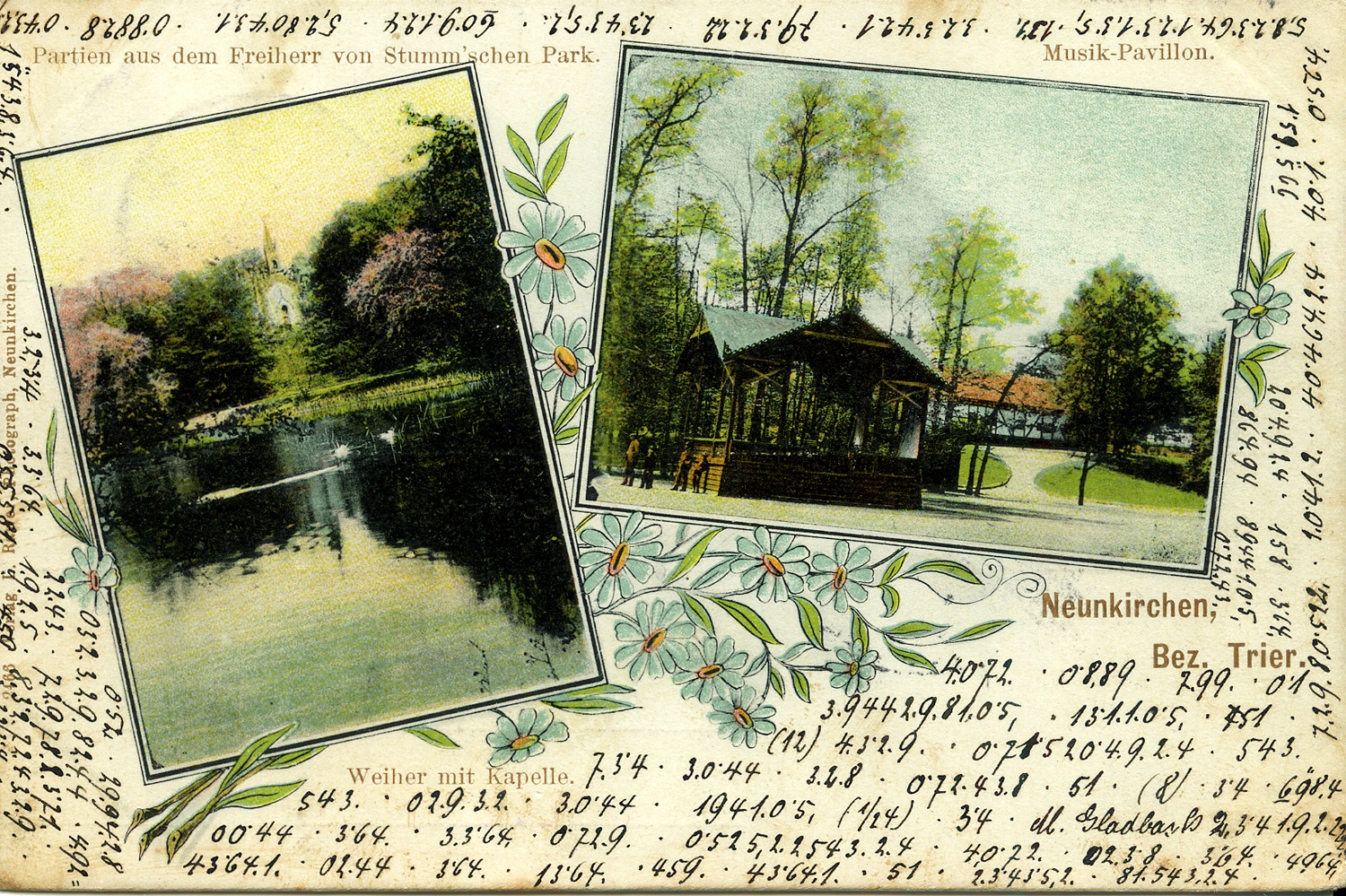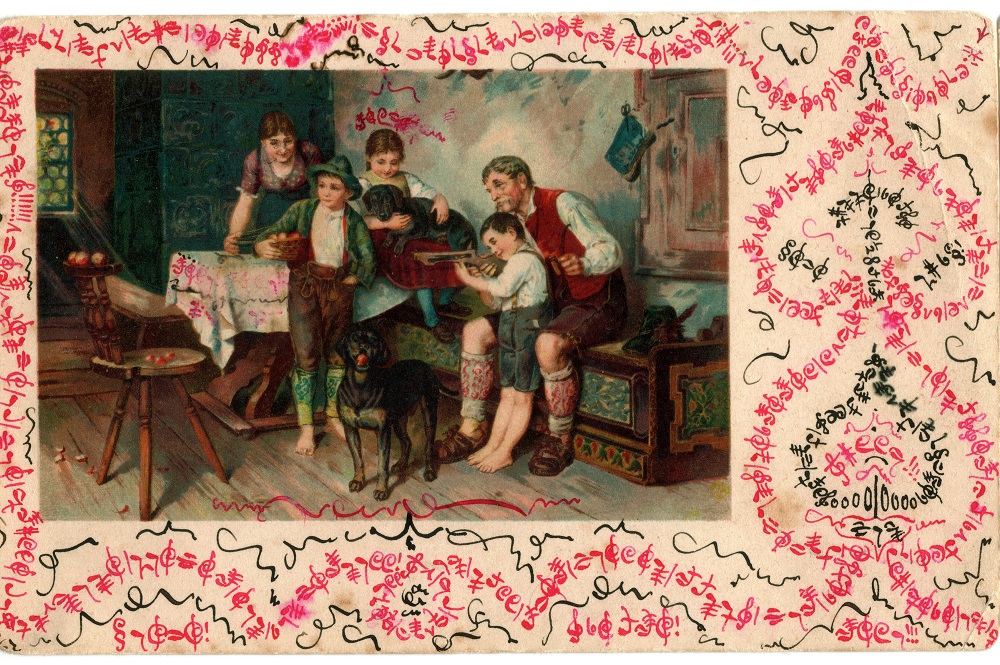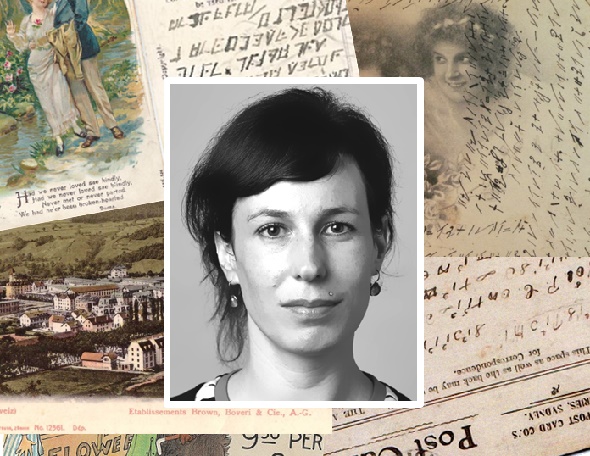Schmehs Beispiele belegen auch, dass die Verfasser verschlüsselter Karten meist männlich waren. Den Grund hierfür vermutet der Krypto-Experte unter anderem in der Tatsache, dass ledige junge Frauen wie Theresia Metzler typischerweise bei ihren Eltern wohnten, die ebenso über ihre Korrespondenz wie über ihren guten Ruf wachten. Josef Fröwis tingelte derweil durch Österreich und verschickte Motivkarten mit „Grüßen von der Arlbergbahn“, stets verziert mit seiner geheimen Notenschrift.

Source: Bregenzerwald Archiv
„WIE ICH DICH LIEBE, SO INNIG, SO HEISS, SO TREU UND WAHR ALS MEIN LEBEN SAMMT DER GANZEN WELT!!! SO SEHR!!! SO SEHR!!!“, schwärmt er. Und fleht: „O SÜSSE RESI, MEINE UNENDLICH GELIEBTE BRAUT!!!! ERHÖRE MICH DOCH!!!!! BITTE!!!! BITTE!!!!! BITTE!!!!!!!“. Antworten von Resi sind nicht erhalten geblieben. Vermutlich war keusches Schweigen die klügste Strategie, um Josefs versteckte Botschaften weiterhin als harmlose Kritzeleien zu tarnen. Vielleicht machte die junge Frau ihrem Herzen aber auch in den wenigen Momenten trauter Zweisamkeit Luft, die die Verliebten miteinander teilten („KOMME VIELLEICHT HEUTE BIS NEUN UHR WIEDER VOR DAS KÜCHENFENSTER“.)
Eine der wenigen Schmeh bekannten verschlüsselten Korrespondenzen zweier Liebender lässt erahnen, wie Resis Antwort vielleicht ausgesehen hätte. Sie stammt von 1904 und besteht aus zwei Postkarten. Die erste enthält die mit Zahlen und Strichen verschlüsselte Botschaft eines August Dedering aus Neunkirchen an seine Liebste Maria Scheck in Mönchengladbach. Maria, gar nicht schüchtern, antwortet mit den zärtlichen, ebenfalls codierten Worten: „DU BIST MEIN TREUER SÜSSER HERZENSAUGUST MEIN GANZES EINZIGES GLÜCK AUF DIESER WELT.“

Source: Manfred Hahn
Küsse ohne ohne Zahl
Nicht alle 44 Postkartentexte zeugen von Glück und von Harmonie: Hier und da weist die Notenschrift Missklänge auf. „ACH MEINE INNIG GELIEBTE O LASSET EUCH NICHT BETHÖREN VON FREMDEN DIE NACH MÄDCHEN HERZEN TRACHTEN UN IHRE BEGIERDEN ZU BEFRIEDIGEN UND WIEDER WEITER ZIEHEN UM ES WIEDER SO ZU MACHEN!“, schreibt Fröwis, eifersüchtig auf mögliche Nebenbuhler. Erotische Begierde drückt der Organist mal mehr, mal weniger subtil aus. So schickt er Resi beispielsweise das Bild zweier Liebender auf einer Waldlichtung mit den Worten „DENKE WIR SEIEN SO BEISAMMEN UND ICH HERZE UND KÜSSE DICH OHNE OHNE ZAHL!!!!!!!!!!!!!!!!!!!! SCHAU WIE S´ AMÖRLE SCHIESST!“.

Source: Bregenzerwald Archiv
Wir wissen nicht, ob Theresia Metzler wirklich jeder einzelnen Postkarte entgegen fieberte oder ob sie Josefs Notengebilde und seinen inflationären Gebrauch von Ausrufezeichen auch mal leid war. Ungeklärt bleibt auch, ob unser fiktiver Postbote das Geheimnis des jungen Paars erriet. Sicher ist, dass Josef Fröwis seine Resi letztlich zum Traualtar führte – und dass seine verschlüsselte Postkartensammlung heute zu den wohl umfangreichsten ihrer Art zählt.
Follow @KlausSchmeh
Further reading: Who can solve this beautiful encrypted postcard?
Linkedin: https://www.linkedin.com/groups/13501820
Facebook: https://www.facebook.com/groups/763282653806483/



Kommentare (8)